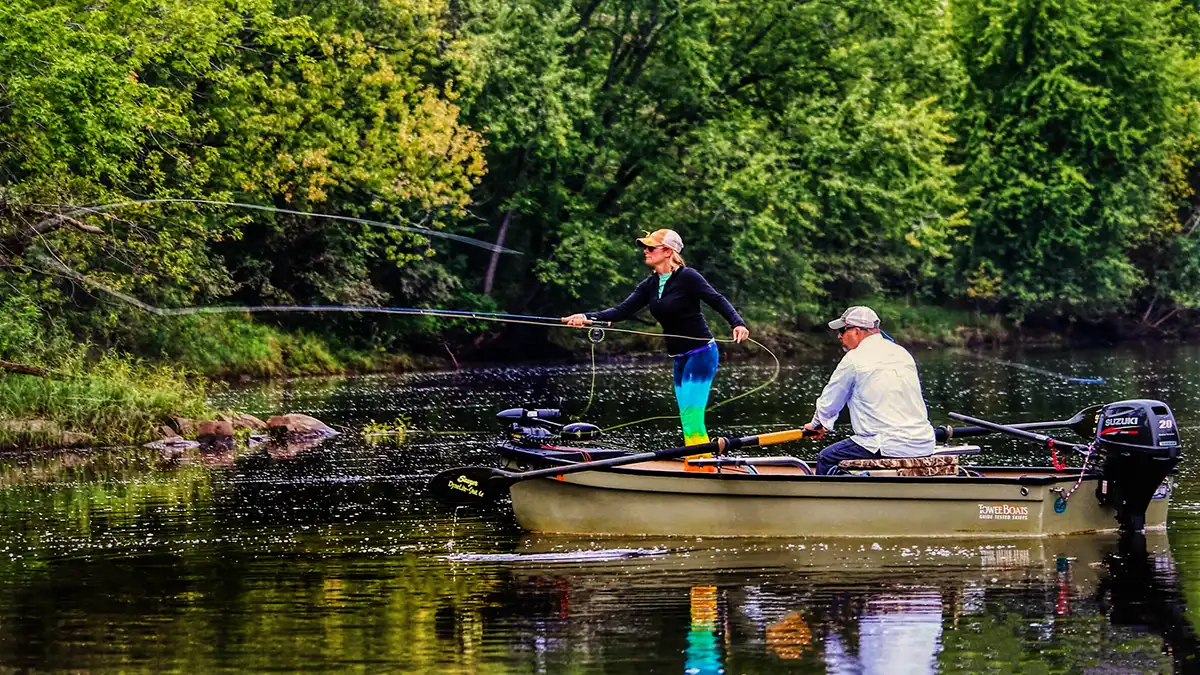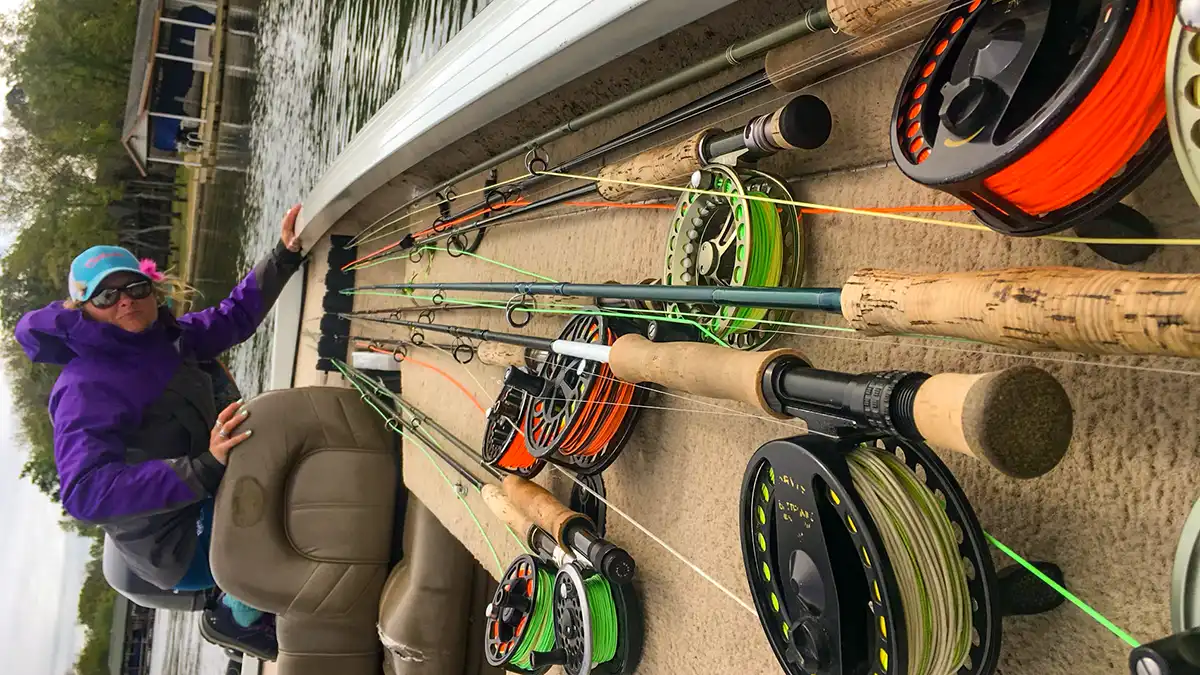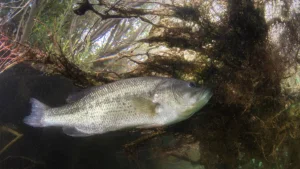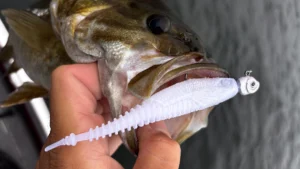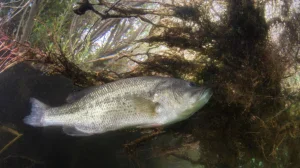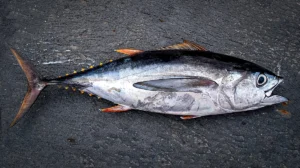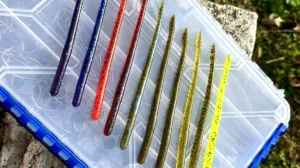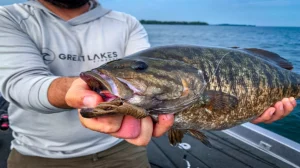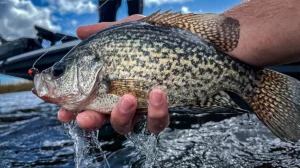Fly fishing has intrigued me since childhood growing up on a small lake in Wisconsin. And now I am able to pass it forward much in the way it was passed to me. So I spend a lot of time helping folks learn about fly fishing gear as well as techniques. So we’ll share some of this lifelong passion and insight on fly gear to help others get into this amazing sport fishing method.
Although my grandfather was a passionate fly angler, he pursued his skills in remote destinations like Alaska and not on our home lake. Nevertheless, I found myself enchanted by the videos he watched in between episodes of Wheel of Fortune and the graceful casts of local fly anglers on the river. Films like A River Runs Through It further fueled my fascination. Unfortunately, my family’s affinity for scuba diving overshadowed any opportunity I had of learning to fly fish from good old pops.
With no internet in sight for years, I turned to books and old movies to keep up my curiosity. When I finally summoned the nerve to walk into my first fly shop to take a fly-tying class, I felt like I was home. When the ice finally cleared from the nearby Huron River, I knew enough to be dangerous. And dangerous I was, to every tree, bush and bystander in my path. The fish, however, were safe.
It took me many trips to the river to figure out the water, the cast, the flies and everything else that hindered my first fish. Yet, even during my clumsy attempts, curious onlookers would approach me expressing their desire to try fly fishing but feeling intimidated by its perceived complexity and expense in fly fishing gear. I understood that sentiment completely. I had been there.
GETTING STARTED IN FLY FISHING
Embarking on a new hobby can lead to information overload, but fly fishing adds an extra level with its specialized gear, fly selection, and casting techniques. People stop to watch fly anglers because of the magical allure of their casts, which can be quite intimidating to a new angler.
Nowadays, there are many YouTube videos, books and blogs offering more than a myriad of opinions, making it difficult to know where to begin. But you’ve come to the right place.
While everything from rod weights to flies and all that’s in between can appear daunting, fly fishing is much easier than you think once you break down the basics. So, let’s “eat the elephant one bite at a time,” and get started with the basics – the fly rod setup.
FLY ROD BASICS
The fly fishing rod is the backbone of your fly-fishing setup, and understanding its basics is crucial. While fly rods have numerous nuances, choosing the right rod will depend on two main factors:
- What you’re fishing for
- The size of the fly
Fly Rod Size
Fly rods are classified by weight, ranging from 00 to 16. The smaller the number, the lighter the rod and the narrower and more delicate the blank. In most cases, you choose a rod based on the size of the fly you intend to cast. For example, a 3 weight is an excellent choice for tiny flies and small mountain streams, ideal for brook trout. Conversely, if you plan to pursue blue marlin using a foot-long baitfish-patterned streamer, you’ll want a 16 weight rod.
While you can easily throw a small fly on a larger weight rod, throwing a bigger fly on a smaller weight rod will prove frustrating and extremely difficult. However, there is an exception to the fly/rod rule. Large, powerful fish like predatory browns or tarpon eat small flies but you should never target them with a 5 weight rod, even if you could easily cast that fly with that size rod.
A 5 weight rod would be underweighted for that size fish. In that instance, you’d need a larger sized rod for a snowball’s chance in a Tennessee summer of landing that fish with your rod still intact. The standard length of a fly rod is 9 feet, but they are available in shorter rods and longer rods for specific techniques, but we’ll discuss that at a later time.
Weight, however, isn’t the only thing to consider when buying a fly rod.
Fly Rod Action
Fly rods are also characterized by their action, which is their overall stiffness which relates directly to how they bend, and what their recovery time is (how quickly the rod returns to its straight position). There are three main actions: slow, medium (also known as moderate or moderate-fast), and fast. Let’s break them down into bite-sized pieces.
A slow action rod is considered a “soft rod” and will bend starting just above the butt section of the rod (where the cork handle is) and bend all the way to the tip. Slow action rods typically resemble a wet noodle and are normally made of bamboo or fiberglass. They excel in short distances and delicate presentations, making them excellent specialty rods for small streams. However, they tend to be challenging to cast a for new fly angler and have a longer recovery than other rods.
A medium action rod will bend from the mid-section all the way to the tip (with moderate-fast bending a little higher up the rod than moderate). Medium action rods, in my opinion, are the easiest for new and average anglers to cast. They offer great versatility and are typically made of fiberglass or graphite, with the majority made of graphite. These rods provide the most flexibility in casting and presentation and have a medium recovery time.
A fast action “stiff rod” will bend only at the tip of the rod. The fast action fly rods are made from graphite or a boron/graphite mix and provide superior fighting power, enabling you to muscle big fish out of cover. They are excellent choices for windy conditions (such as in North Dakota or the Keys). Fast action rods have a quick recovery time, making them easier to punch through wind.
For novice fly anglers who are looking to purchase their first rod in freshwater, a 9-foot 5-weight rod with a medium to medium-fast action is a solid choice. This is a decent overall freshwater rod that will take you from the bluegill pond to the trout stream, and out to the bass lake. If you are looking for your first saltwater rod, that will depend on what species you’re targeting, but a good overall beach fly rod would be a 9-foot, 8-weight with a moderate-fast to fast action depending on the wind.
You can find all the necessary information about a fly rod by examining the blank near the cork handle. Fly rods are generally marked with weight, length and number of pieces. A 5wt 9-0 4 pc means a 9 feet long, 5-weight rod that comes in four pieces.
Since each person’s casting style is a little different, it’s beneficial to head to the local shop that not only carries fly rods but possesses a level of expertise. Test out various rods before you buy one. Most entry level fly rods on the market today are decent and new and average anglers would have a difficult time telling the nuanced differences between a $100 rod and a $1000 rod, so don’t be duped into just buying the most expensive one offered by the local shop.
Buy the rod in your price point that feels good in your hand. When you cast it, the rod should feel like an extension of your arm.
FLY FISHING REEL BASICS
Today’s store shelves are brimming with a multitude of fly reel brads, almost matching the variety of fly rods available. Fortunately, choosing a fly reel is easier than selecting a rod. In general, there are four key aspects to consider when making that choice – arbor size, drag type, weight and price point.
Arbor Size
The arbor of the reel refers to the diameter of the spool around which the fly line is wound. While there are a number of different sized arbors, the main two are small arbor and large arbor. Today large arbor reels dominate the market, and for good reason. The larger the arbor, the quicker the rate of retrieval. This might not seem like a big deal, but every rotation of the reel handle counts when you’re fight a powerful fish.
For example, a 5-weight small arbor fly reel like the old school Hardy Perfect probably has an arbor diameter of 1-1/2 inches which would only retrieve about 1-1/2 inches of line for one rotation of the reel handle. That’s not a lot of line. Compare that with the Hardy Ultradisc modern 5-wt large arbor fly reel and the arbor diameter is about 3-1/2 inches of line for each rotation of the handle.
In the case of fighting a strong fish in swift river current, just know that every inch counts. But I’m a big fan of large arbor reels for another reason. The makeup of a fly line makes them prone to having “memory,” which means that if they are on the same spool for a while, they will retain the coil of that reel. The smaller the arbor, the tighter the coil, and a tightly wound fly line is more difficult to cast.
Drag Type
When purchasing a fly reel, there are two primary drag types: disc drag and click and pawl. A disc drag system compresses a washer to create friction against the spool and applies tension to the line, much like the disc brakes on a car. On the other hand, click and pawl is the old school drag method which can be easily recognized by the classic clicking sound it makes when a fish pulls line from the reel.
In a click and pawl reel, there is a gear fixed to the center of the frame with a small spring that adds resistance as the pawl passes over the gear on the frame. The type of drag you choose is more personal preference if you’re chasing smaller fish, but you’ll definitely want a disc drag if you’re fishing a rod above a 5-weight.
Note: If you’re fishing saltwater, you’ll also want to make sure you have a sealed disc drag to keep out the salt and preserve the life of your reel.
Weight and Weight
When pairing the fly reel to a fly rod, you’ll want to take into consideration two different weights – the line weight and the actual weight of the fly reel. Fly reels are labeled similar to fly rods so a 5-wt reel will match a 5-wt, so selecting the appropriate line weight is relatively straight forward.
The actual weight of the fly reel, however, is also quite important. Aim to choose a fly reel that balances well with your rod. To check if the setup is properly balanced, place your finger approximately one inch below the top of the cork holding the rod horizontally. It should balance at that point. Avoid pairing a heavy rod with a light reel, or a light reel with a heavy rod, since that will feel awkward during casting.
Although you can still cast and catch fish with an ill-paired setup, your best bet is to try to balance the combo if possible.
Price
If you’re fishing with a 5 wt or less, don’t be fooled – the reel is nothing more than a pretty line holder. Panfish, trout, crappie and even bass can be caught without ever touching your reel handle. In those instances, choose the reel that works best for your rod and what you prefer.
There are beautifully designed small trout reels that can cost upwards of $1000, but at that point what you’re mostly buying is a status symbol and a piece of art. (For the record, I’m not against status symbols or pieces of art – this is, after all, fly fishing). Where price will become an issue is in the weight of the reel. Typically, cheaper reels tend to be heavier, bulkier and a little less cosmetically appealing.
Will they work? Of course. But when you’re first getting started, save your money, buy a decent reel but put the rest of your money in your fly line.
FLY LINE BASICS
One of the defining elements that sets fly fishing apart is the fly line. Fly anglers don’t just cast line back and forth for the fun of it (although it is quite enjoyable). Unlike the weightless lines used on a baitcaster or a spinning reel, which rely on weighted lures to propel them into the water, fly lines themselves are weighted.
This is necessary because most flies alone lack the weight required to reach fish or making a meaningful cast. When you see a fly angler casting line back and forth in the air, nine times out of ten it’s because they are casting out more line to get the fly to where they need it to land.
Choosing the right fly line isn’t quite as easy as just walking into a fly shop and picking one off the shelf. Numerous factors come into play to determine the optimal line for your setup. Beware, not all fly lines are created equal, and a good fly line is not only pricey, it’s worth every penny.
Types of Fly Fishing Line
Fly anglers love to toss around terminology like weight forward, sink tip, floating, level line, double-taper, shooting-taper and on, and on. However, before we get caught in the weeds, I’ll make this easy on you.
For beginners, there are only three different fly line types you need to consider:
- floating
- intermediate
- sinking
The choice is directly dependent on where you want the fly to sit in the water column. As the names suggest, floating lines float, intermediate lines sit in the middle of the water column and sinking lines sink to the bottom. For example, if you enjoy fishing with poppers or seeing a fish come to the surface for a strike, then a floating line is your best bet.
The vast majority of lines sold today are 100 feet long and feature a weight-forward/shooting taper design. In a weight-forward line, the majority of the line’s weight is concentrated in the first 30 feet. This facilitates longer and easier casts, as the weight assists in propelling the line forward.
It also enhances your ability to feel the line “load,” meaning you can sense the rod bending during the backcast. In the past, new anglers were encouraged to overweight their line, but today, with weight forward lines and fly line manufacturers who have done a great job standardizing lines, that’s not necessary. If you’re looking to line your new 5-weight, then purchase a 5-weight line.
Price Point
Fly lines are expensive. When I bought my first setup, I never even thought to ask how much the fly line was. When it was $80 way back when, I nearly fell over. Today, a good fly line will still set you back $100, but trust me, it’s worth it. While entry level fly lines also flood today’s market, I suggest sticking with reputable brands such as RIO or Scientific Angler.
In my experience teaching casting lessons, I’ve encountered anglers with solid casting techniques to struggle to cast effectively due to using the wrong line. This is where the expertise of the staff at the fly shop comes in handy. Let them know where you will be fishing, bring your rod and reel setup to the shop and have them let you test some lines.
As a beginner, you’ll find many fly fishing combos on the market which include rod, reel, line and even the tippet (the mono/fluoro that connects your fly line to your fly). If you opt for a combo package, I strongly recommend stripping the existing line from the combo’s reel and having the shop replace it with a better line. I guarantee this simple change will make a world of difference.
Fly fishing is an ever-evolving sport with a vast amount of knowledge to absorb, which may seem overwhelming at first. However, it’s much less complicated than you might imagine when you tackle it bite by bite. I’m here to teach you to fly, but remember, the ensuing obsession that follows, well that’s not my responsibility.
Choose a rod weight that matches where you will fish most. Choose a reel that matches that rod. Put good line on it. And then just grab a handful of affordable flies and start working on your casting technique. We’ll provide more info on all of this as we go.
